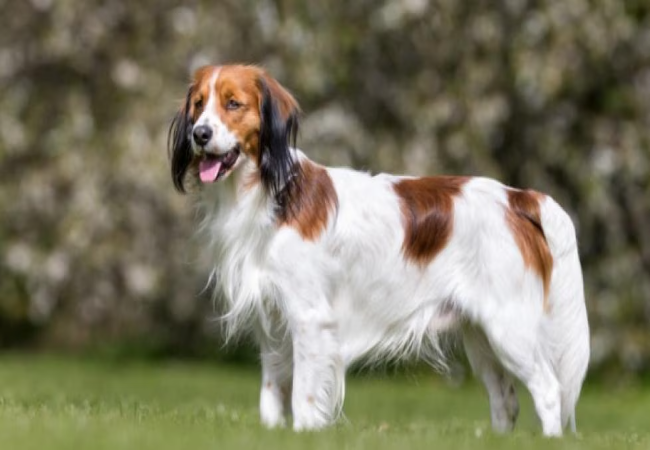Nederlandse Kooikerhondje 2025: Charming Dutch Duck Hunter Guide 🐶✨

In this article
Nederlandse Kooikerhondje 2025: Charming Dutch Duck Hunter Guide 🐶✨
By Dr. Duncan Houston BVSc
Introduction 🌟
The Nederlandse Kooikerhondje—often just “Kooiker”—is a Dutch spaniel-style breed originally used to lure waterfowl into decoy traps in the 16th century. With its white and orange-red coat, feathered tail, and cheerful character, this versatile and smart breed has become a beloved companion and competitor in canine sports. In 2025, they are still valued for their grace, agility, and affectionate demeanor.
1. History & Origins 📜
- Bred in the Netherlands since the 16th century to entice ducks into specialized funnel-style traps (“kooien”) by wagging their white tails, appearing as prey.
- Nearly extinct after WWII (only ~25 dogs remained); revived post-war and recorded by the Dutch Kennel Club in 1971, then by FCI and later AKC in 2018.
- Inspired several modern breeds—some experts say it's an ancestor of the Nova Scotia Duck Tolling Retriever.
2. Size & Appearance 🧩
- Height: males ~40 cm, females ~38 cm; Weight: typically 20–30 lb (9–14 kg).
- Medium-length, double coat: white with orange-red patches and distinctive black-tipped "earrings" (ear fringes).
- Feathered tail, expressive eyes, balanced spaniel build—agile and athletic.
3. Temperament & Personality ❤️
- Friendly, alert, intelligent, and loyal at home; outdoors, they are energetic sporting dogs.
- Sensitive and gentle—reacts poorly to harsh training; thrives on praise and kind guidance.
- Can be reserved or shy with strangers—socialization from a young age is key.
4. Exercise & Mental Enrichment 🧠
- Needs 60–90 minutes of activity daily (walks, play, running), plus mental stimulation.
- Enjoys sporting activities—agility, tracking, flyball, scent work, water games—reduces boredom.
- Without stimulation, they may resort to mischief like chewing or digging.
5. Grooming & Coat Care ✂️
- Medium maintenance: weekly brushing to distribute coat oils, enhance natural water resistance, and manage shedding cycles.
- Bathe only as needed—once every 1–2 months—to preserve natural coat condition.
- Regular nail trims, ear cleaning, and dental care—two to three times weekly for strong oral health.
6. Health & Lifespan 🩺
Lifespan: Typically 12–15 years when well cared for.
Common Health Concerns:
- Hereditary myopathy, von Willebrand disease, necrotizing myelopathy, patellar luxation, renal dysplasia, ataxia—screening recommended.
- Orthopedic issues like luxating patella and hip dysplasia—regular vet screening helps detection.
- Bloat, ear infections, and obesity are possible—maintain proper diet and grooming practices.
7. Training & Socialization 🎓
- Highly trainable using positive reinforcement—learns quickly, but independent streak requires firm consistency.
- Socialize early with people, sounds, animals, and environments—especially to reduce shyness.
- Structure is important—crates, routines, and family-wide participation in training enhance stability.
8. Nutrition & Feeding 🍽️
- High‑quality kibble suitable for medium, active breeds—balanced proteins, fats, and fiber.
- Feed measured portions—typically two meals daily—to prevent overeating and obesity.
- Consider joint supplements or omega-3s in consultation with your vet.
9. Family Fit & Living Situation 🏡
- Great for active families, singles, and couples—adapts well to homes with yards or regular outings.
- Good with children when well-socialized—supervision recommended around very young kids.
- Reserved with strangers; excellent watchdogs but not aggressive—early social exposure essential.
10. Adoption & Breeder Advice 🌟
- Choose breeders testing for genetic health issues (e.g., patella, myopathy, von Willebrand)—ask for clearances.
- Rescue options are limited; join breed clubs or search national registries in Holland, Europe, or North America.
- Price range ~$1,500–3,000 USD depending on pedigree, location, and screening.
11. FAQs ❓
- Do they shed? Moderate shedding—weekly brushing handles most; increased in spring/fall.
- Are they good with cats? Yes, if raised with them—prey-driven but not aggressive.
- Can they live in apartments? Possible with enough exercise; best in homes with yard or frequent outings.
- How long do they live? Typically 12–15 years; longer with responsible care.
12. Ask A Vet, 🐶
- Ask A Vet: Professional insights on genetic screening, joint health, behavior training, ear care, and dietary planning.
13. Final Thoughts ✅
The Nederlandse Kooikerhondje is a lively, loving, and intelligent companion—perfect for active households that appreciate natural elegance and boundless energy. With its striking coat, alert demeanor, and athletic talent, this rare Dutch spaniel offers a rewarding blend of tradition and companionship. For ongoing guidance and expert support, visit AskAVet.com and download the Ask A Vet app—your essential partner for lifelong pet care!






